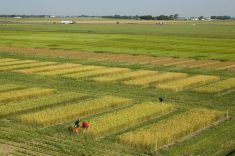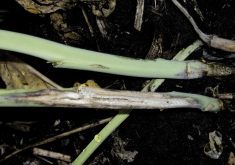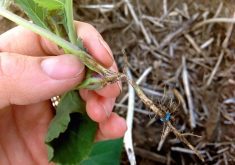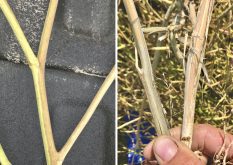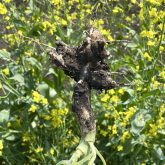Researchers are continuing to monitor plots and a few fields for stripe rust survival throughout the winter and early spring.
Evidence of overwintering stripe rust was found last year in central Alberta, and Agriculture Canada researcher Denis Gaudet has extended his stripe rust survey this winter to include some evaluations in southern Alberta.
Eight winter wheat fields in the southwest (Lethbridge, Cardston, Raymond and Coaldale areas) were surveyed in mid-December.
“Stripe rust levels of five per cent were observed in two fields and trace levels in a third field, said Michael Harding, research scientist-plant pathology with Alberta Agriculture and Rural Development in Brooks.
Read Also

Physiological leaf spot suspected in southern Alberta winter wheat
Physiological leaf spot has been suspected in winter wheat fields in southern Alberta. It is important for farmers to be scouting for PLS during June and July to asses the risk to their crops.
“Stripe rust was widespread in volunteer winter and spring wheat throughout the region. It was apparent that stripe rust had infected winter wheat that was seeded from early to late September (i.e. Zadoks Stage 21) but later-seeded winter wheat (Zadoks Stage 1) remains clean. Stripe rust was also widespread in winter wheat research plots.”
Last year’s survey also found seeding date appears to be a factor, and that stripe rust severity or prevalence appeared to be more associated with seeding time than cultivar resistance ratings — that is an early-seeded field (i.e before early September) tended to have more stripe rust than late seeding (i.e. after early September) regardless of genetic resistance ratings of each cultivar.
The early-seeding effect is likely due to the fact that stripe rust spores were in the air in early September, but not later in the month. Therefore leaves of the later-seeded plants escaped disease because they had not yet emerged and could not be infected. The difference in severity between resistant and susceptible cultivars becomes apparent later, in early spring.
Gaudet’s group will be monitoring plots and a few fields for stripe rust survival throughout the winter and early spring. But Gaudet noted the presence of stripe rust in the three winter wheat fields in southern Alberta does not necessarily mean that the stripe rust pathogen will be able to overwinter in those fields. If any overwintering survival of the stripe rust pathogen occurs, it cannot be detected until spring 2015.



